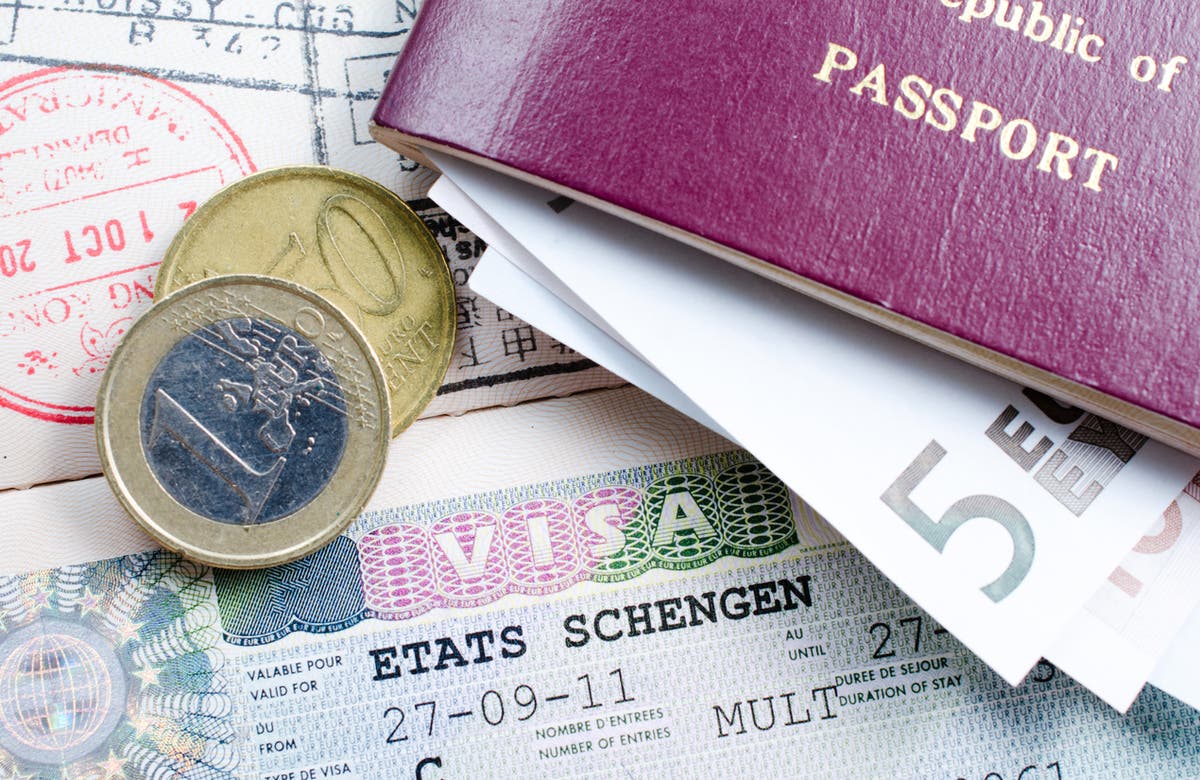More travel red tape next summer for Europe trips: Get ready for Etias and EES
Every traveller must be fingerprinted and provide a facial biometric

Tourist traffic is now flowing freely through Dover and Folkestone after widespread long delays during the main getaway weekend.
Ministers have blamed the French authorities for failing to deploy more border staff to fulfil the more onerous post-Brexit rules to which the UK asked to be subject.
British passport holders must now have their travel documents inspected and stamped.
The next steps, which are due to be introduced in May 2023, will involve more red tape. The good news: passport stamping will end. The bad news: every traveller must be fingerprinted and provide a facial biometric.
What is changing?
Rather belatedly, the European Union will introduce an “entry exit system” (EES) that will record the movements of non-EU visitors. At the same time, prospective UK visitors to the Schengen area will have to apply online for permission to enter.
The Schengen area comprises most of the 27 remaining members of the European Union (but not Bulgaria, Croatia, Cyprus, Ireland and Romania) plus Iceland, Norway, Switzerland and plucky Liechtenstein.
What is the “entry exit system”?
An automated IT system for registering travellers from “third countries”, which means everywhere outside the EU and Schengen area.
Each time the traveller crosses an EU external border the system will register the date and place of entry and exit, plus fingerprints and a facial biometric.
The system, says the European Union “will replace the current system of manual stamping of passports, which is time consuming, does not provide reliable data on border crossings and does not allow a systematic detection of over-stayers”.
British travellers are now restricted to 90 days’ stay in any 180 days, but checks currently depend on checking passport stamps and are haphazard.
Alongside the system, “visa exempt” travellers such as the British will be required to obtain a permit under the European Travel Information and Authorisation System (Etias).
How will that biometric stuff work?
At airports, the US experience suggests the system will work fairly smoothly. But for terrestrial travellers it could be tough.
Tim Reardon, head of EU Exit for the Port of Dover, said: “There is no such thing as an e-gate for a car, and there is no such thing as an e-gate process for people travelling as a group. They’re all one-at-a-time processes.
“There is no way of doing a biometric control without getting everyone out of the vehicle.
“That’s the one thing on our site which cannot happen because you’re in the middle of live traffic. It would be equivalent to asking people to get out of their car at a motorway toll booth. It’s fundamentally unsafe and it can’t happen.”
Gareth Williams, strategy director for Eurostar, which runs trains to France from London, said: “We don’t currently see a practical solution. If we take the peak of August, up to 80 per cent of people will have to go through the system.
“We do have a very extreme space challenge. At a minimum we would require over 30 kiosks, and an area about the size of our entire check in area at St Pancras.”
The rules will not apply to EU citizens.
Is Etias a visa?
Officially, no. Europe says that Etias is “a pre-travel authorisation system”. It is a similar concept to the US Esta and Canadian eTA, which are not technically visas.
“Its key function is to verify if a third country national meets entry requirements before travelling to the Schengen area,” says the EU.
But as Etias requires visitors to apply in advance, provide lots of personal information, pay money (€7/£6 for all applicants aged 18 to 70), and be issued with a permit to cross a border, I contend it amounts to a normal person’s understanding of a visa.
When and where must I apply?
There is no need to worry about this aspect of Brexit until May 2023 (the European Union originally hoped it would be ready by 2021).
At the heart of the system will be an Etias app and website (etias.eu).
What details will be required?
Personal information including name, address, contact details, passport details and occupation (with your job title and employer, or for students, the name of educational establishment).
There will also be questions about your state of health, particularly any infectious diseases.
You must give details of any serious convictions in the past 20 years.
Next, you must say why you are travelling (holiday, business, visiting family, etc), specify the country you will first arrive in and provide the address of your first night’s stay — which will pose a problem for travellers who like to make plans as they go along.
What happens to the information?
Every application will be checked against EU and relevant Interpol databases, and “a dedicated Etias watch-list”. The system is tuned to pick out individuals suspected of being involved in terrorism, armed robbery, child pornography, fraud, money laundering, cybercrime, people-smuggling, trafficking in endangered animal species, counterfeiting and industrial espionage.
How long will it take for a decision to be made?
The intention is that 95 per cent of applications will be approved within a few minutes. But if an application is flagged – ie there is a “hit” with one of the databases – then a decision could take as long as four days.
It may result in a straight rejection of permission, or require the applicant to attend an interview at a consulate of the first country they intend to visit.
In a case of mistaken identity, will I be able to appeal?
Yes. Details of how to appeal will be included with the notice of rejection.
Once I have an Etias, am I guaranteed admission to the Schengen Area?
No. “Mere possession of a travel authorisation does not confer an automatic right of entry”, says the EU. As with the US, travellers can be turned away for any reason.
Do I need to apply for an Etias every time I travel to Europe?
No. The permit will be valid for three years, or until the passport runs out. It is not yet clear whether you will need to go online and announce your travel plans before each visit to the European Union.
Will I need an Etias to travel to Ireland?
No. The Common Travel Area involving the UK, Ireland, the Isle of Man and the Channel Islands transcends European Union rules, and in any event Ireland is not in the Schengen Area.
What about people without internet access?
They will be expected to get a friend or family member to make the application for them, in the same way as the US Esta and similar schemes.
Just remind us about the 90/180 day rule?
For an example of what it means: if you were to spend the first 90 days of 2023 (January, February and almost all of March) in the Schengen area, you would not be able to return until the very end of June.
Is this all because of Brexit?
No. Work on strengthening the European Union’s external border was already under way before the UK referendum on membership in June 2016. Etias would not be relevant if the UK was still in the EU. But the decision to leave means that British travellers will be classified as “third country” citizens, which triggers extra red tape.

 Tfoso
Tfoso 





























.jpeg?trim=0,89,0,88&width=1200&height=800&crop=1200:800)

